General Surgical Instruments: Names, Uses & Practical Examples

Introduction: Why Understanding Surgical Instruments Matters
Whether you’re a seasoned surgeon, a medical student, or a surgical tech, knowing your surgical instruments — what they’re called, what they do, and how to use them — is critical to safe, effective outcomes in the operating room. Surgical tools are the bridge between diagnosis and treatment. From making the first incision to suturing the final stitch, the precision and purpose behind each instrument are what define surgical success.
In this guide, we’ll walk through the most commonly used general surgical instruments, breaking down:
- What each tool does (purpose)
- How it’s used during procedures (examples)
- Key types and variants
- Tips for selection and handling
Let’s get started.
1. Scalpels (Surgical Knives)
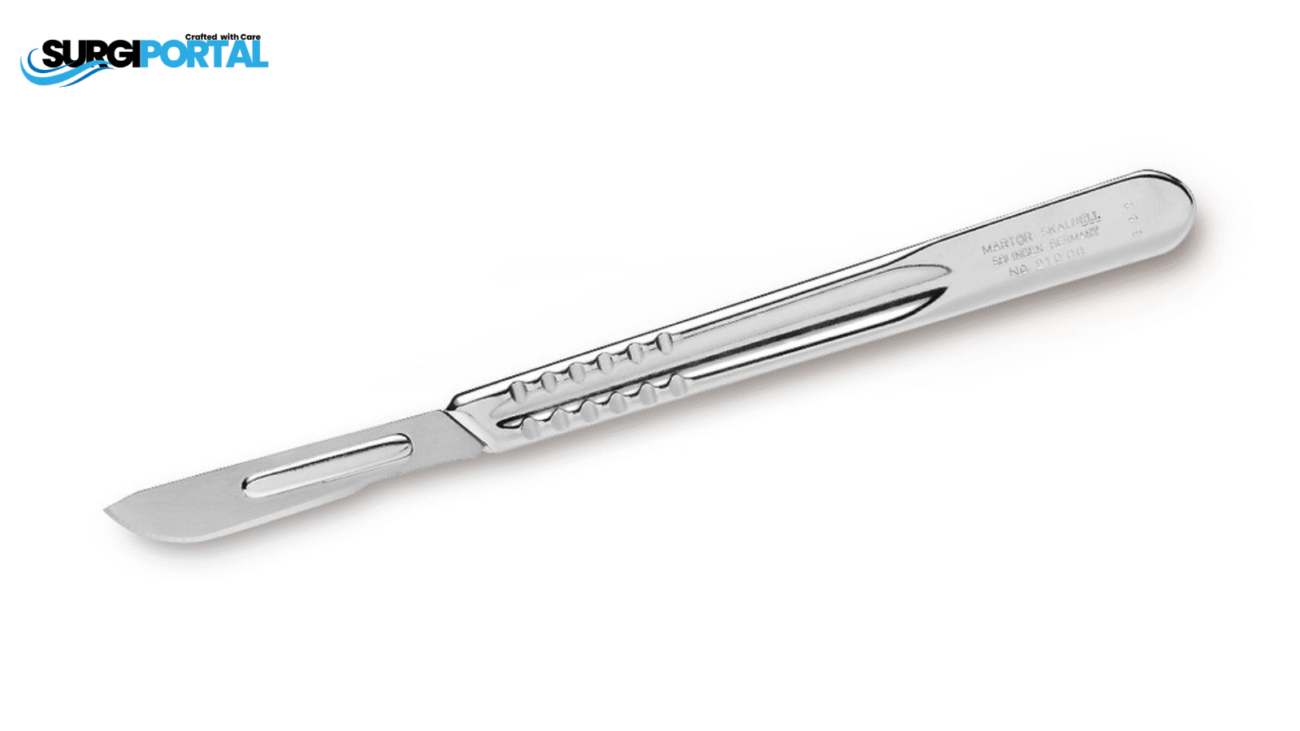
Definition and Purpose
Scalpels are ultra-sharp cutting tools used to make incisions in the skin, muscle, or internal tissues. They are foundational in any surgery, whether major or minor.
Common Uses
- Initial skin incisions in open surgeries
- Cutting fascia, muscles, and delicate tissues
- Dissecting tumors or cysts
- Used in everything from C-sections to cardiac bypasses
Types of Scalpel Blades
| Blade Type | Common Use |
|---|---|
| No. 10 Blade | Ideal for large skin incisions, such as in abdominal surgery |
| No. 15 Blade | Great for short, precise cuts in vascular or pediatric surgery |
| No. 11 Blade | Used for stab incisions (e.g., abscess drainage) |
| No. 20 Blade | Larger version of No. 10, used in orthopedic or general surgery |
Example:
During an appendectomy, a No. 10 blade is typically used to make the initial incision in the lower right abdomen.
2. Surgical Scissors
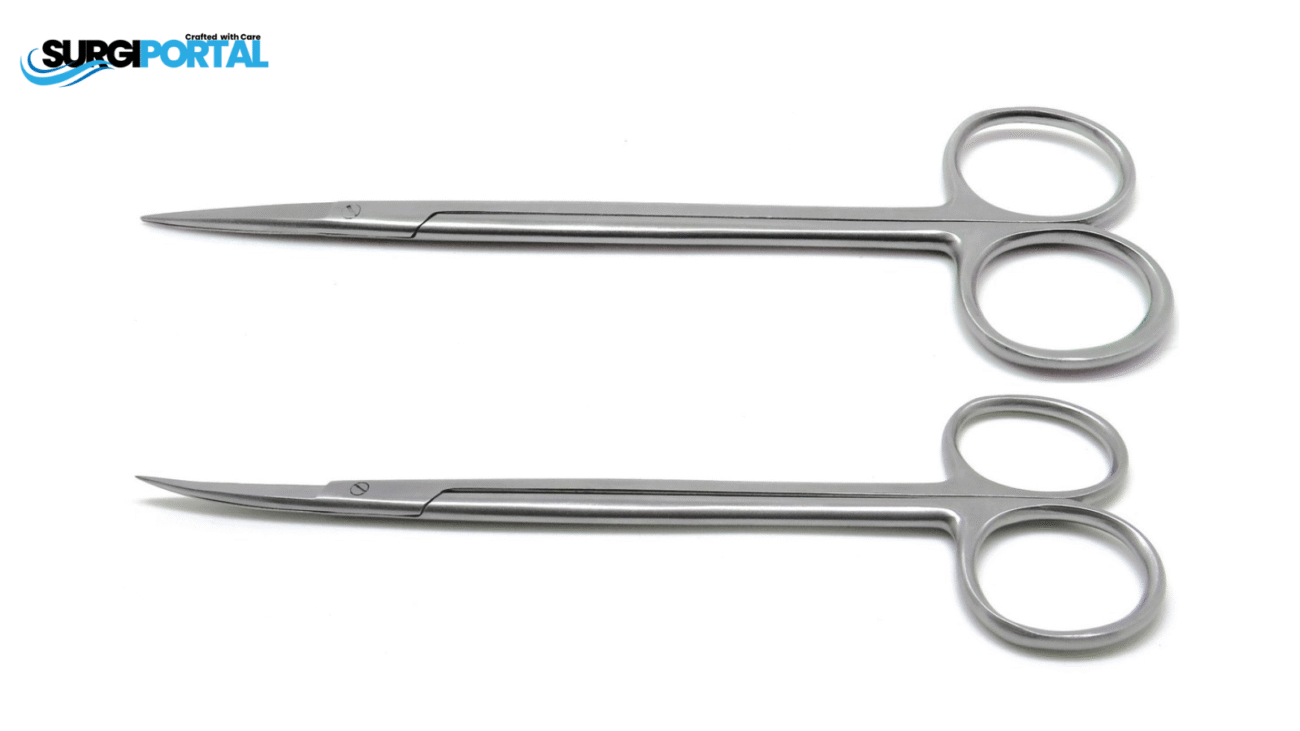
Definition and Purpose
Surgical scissors are designed to cut tissue, sutures, or surgical materials. They vary by blade shape, length, and tip design, depending on their function.
Common Uses
- Cutting sutures
- Dissecting tissue layers
- Trimming fat or fascia
- Removing damaged tissue (debridement)
Types of Surgical Scissors
| Type | Features & Uses |
|---|---|
| Mayo Scissors | Heavy-duty; used for cutting fascia or sutures |
| Metzenbaum Scissors | Longer, slimmer; used for cutting delicate tissues |
| Iris Scissors | Small and sharp; common in ophthalmic or plastic surgery |
| Lister Bandage Scissors | Blunt-ended; designed for cutting bandages safely |
Example:
In soft tissue dissection during hernia repair, Metzenbaum scissors are preferred for their fine tips and curved blades.
3. Forceps
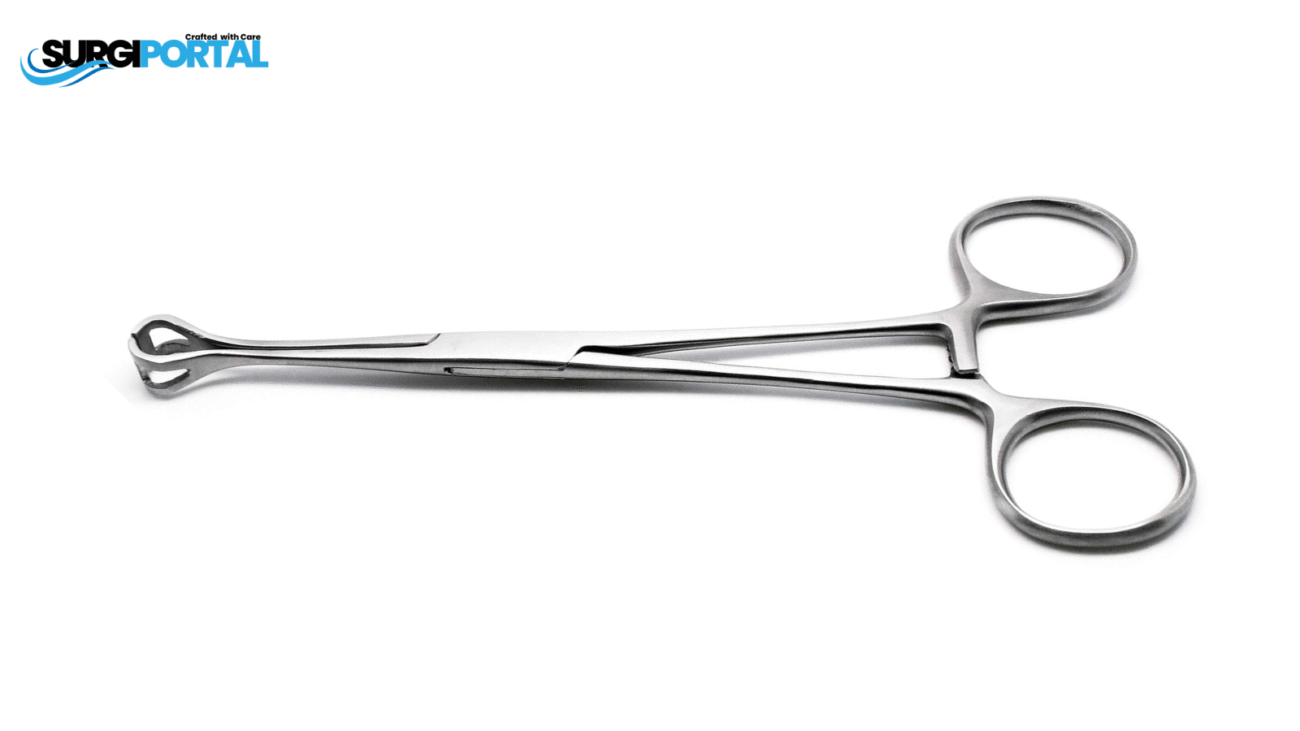
Definition and Purpose
Forceps are tweezer-like instruments used for grasping, holding, or manipulating tissues, sutures, or surgical materials.
Common Uses
- Holding tissue for suturing
- Removing foreign objects
- Handling sterile gauze
- Stabilizing vessels during cauterization
Types of Forceps
| Type | Function |
|---|---|
| Adson Forceps | Delicate grip; often used in skin closure |
| Dressing Forceps | Smooth tips; used for handling bandages and gauze |
| Allis Forceps | Toothed; used to grasp and hold tissues like muscle or fascia |
| Tissue Forceps (with teeth) | Used when a firm grip is needed without slipping |
Example:
A surgeon closing a knee incision may use Adson forceps with teeth to hold the skin edge while applying sutures.
4. Needle Holders (Needle Drivers)
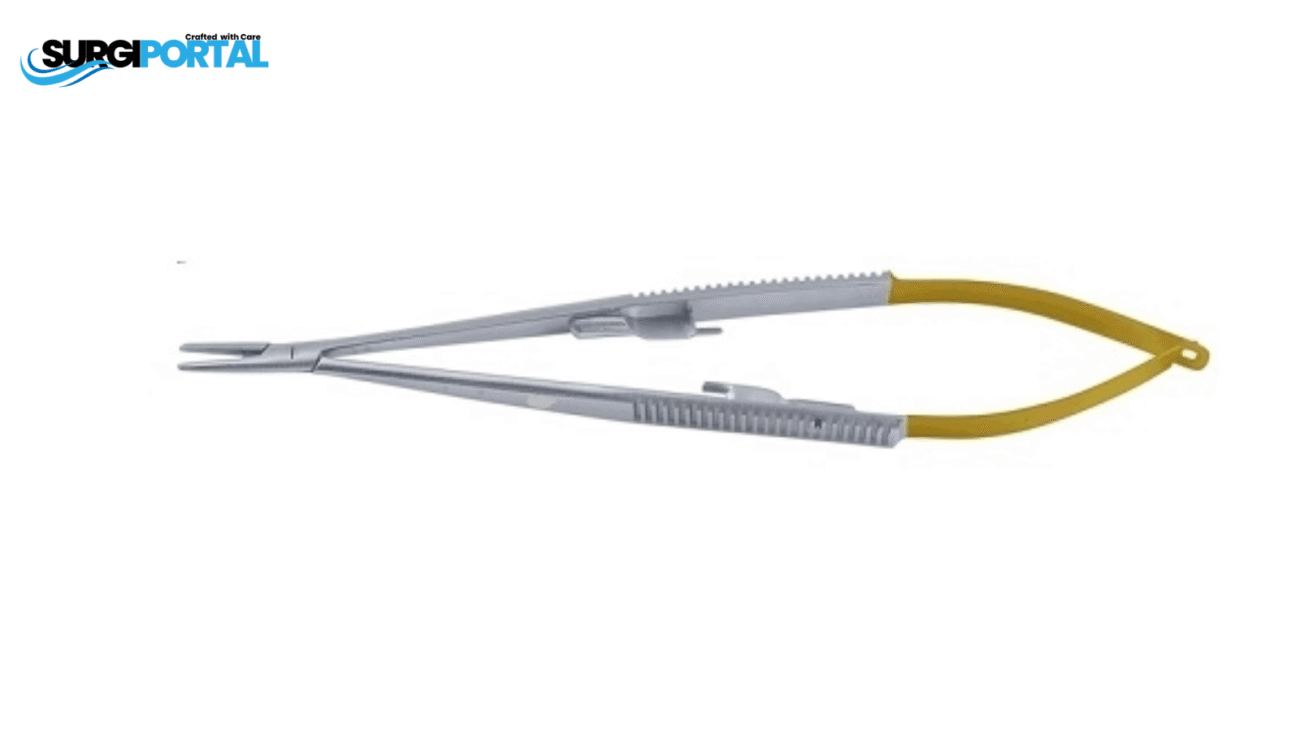
Definition and Purpose
Needle holders are instruments used to hold suture needles firmly during stitching. They look like short scissors but have a locking mechanism to stabilize the needle.
Common Uses
- Suturing muscle, fascia, or skin
- Closing blood vessels
- Placing surgical mesh
Types of Needle Holders
| Type | Key Feature |
|---|---|
| Mayo-Hegar | General-purpose; no cutting blade |
| Olsen-Hegar | Combination of needle holder and scissors; time-saving tool |
| Castroviejo | Delicate, spring-loaded; used in microsurgery (eye, vascular) |
Example:
In cesarean sections, a Mayo-Hegar needle holder is commonly used for placing sutures in the uterine wall.
5. Hemostats (Clamps)

Definition and Purpose
Hemostats are clamp-like tools used to control bleeding by clamping blood vessels or tissue. They’re essential during surgeries involving significant blood flow.
Common Uses
- Achieving temporary hemostasis
- Holding vessels during cauterization
- Grasping bleeding tissues
- Dissecting tissue planes
Types of Hemostats
| Type | Use |
|---|---|
| Mosquito Hemostat | Small; for clamping small vessels |
| Kelly Hemostat | Medium; versatile use in soft tissues |
| Crile Hemostat | Fully serrated jaws; strong grip |
| Rochester-Pean Clamp | Large; controls heavier bleeding in major surgeries |
Example:
In thyroidectomy, Mosquito clamps are used to isolate and control small vessels around the thyroid gland.
6. Retractors
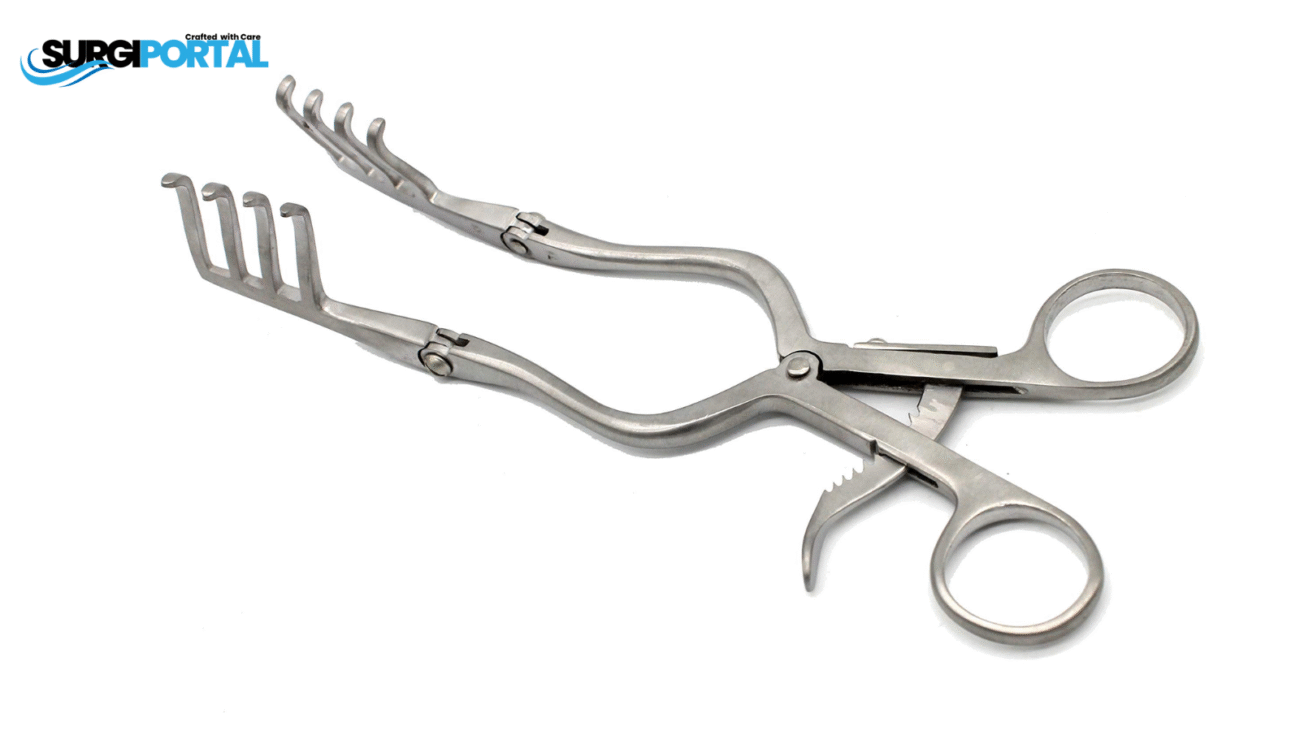
Definition and Purpose
Retractors are used to hold open incisions, tissues, or organs, providing a clear view of the surgical field.
Common Uses
- Holding back skin or muscle layers
- Exposing deep cavities
- Accessing joints in orthopedic surgery
Types of Retractors
| Type | Use |
|---|---|
| Hand-held Retractors | Require an assistant to hold (e.g., Senn, Army-Navy) |
| Self-retaining Retractors | Hold themselves open (e.g., Gelpi, Weitlaner) |
| Abdominal Retractors | Large frame retractors like Balfour or Bookwalter |
Example:
In open cholecystectomy (gallbladder removal), a Deaver retractor may be used to hold back abdominal walls.
7. Suction Devices

Definition and Purpose
Suction tools are used to remove fluids like blood or irrigation solution from the surgical area, maintaining visibility.
Common Uses
- During brain or spine surgery to keep the field clear
- Suctioning blood from thoracic cavity
- Fluid evacuation in abdominal surgery
Common Types
- Yankauer Suction Tip – For general-purpose suction
- Frazier Suction Tip – Finer tip for ENT or neuro surgeries
- Poole Suction Tip – Wide-mouthed, ideal for abdominal cavity
Example:
During spinal laminectomy, a Frazier suction helps maintain a dry surgical field near the spinal cord.
8. Speculums
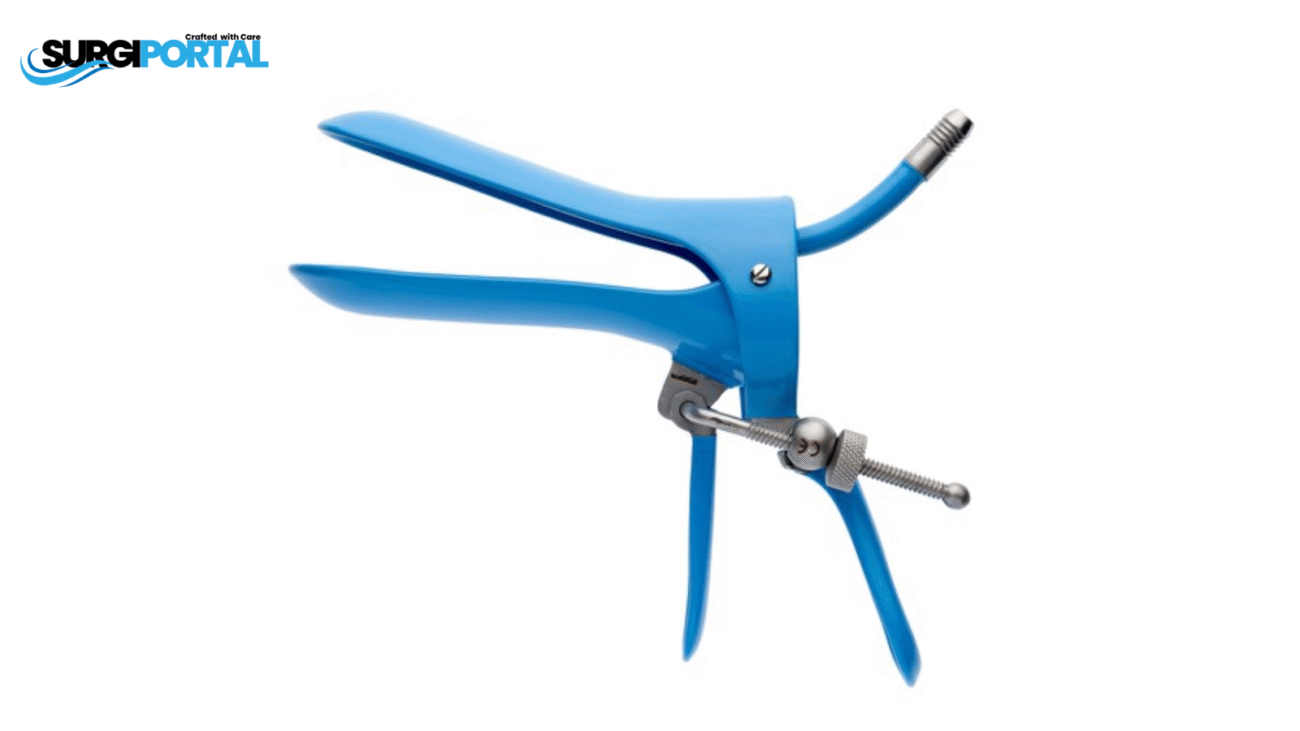
Definition and Purpose
Speculums are tools used to hold open a body cavity for examination or surgical access.
Common Uses
- Vaginal exams or procedures (Pap smears, biopsies)
- Nasal or rectal inspection
- ENT procedures
Types:
- Graves Vaginal Speculum – Most common gynecological tool
- Nasal Speculum – Spreads nostrils open for sinus access
- Rectal Speculum – Opens the anus for visual examination or biopsy
Conclusion: Choosing the Right Surgical Instrument Matters
At SurgiPortal, we know that the right tool in the right hands saves lives. Whether you’re suturing with precision, retracting with care, or clamping a bleeder in seconds, the surgical instrument you use affects the patient’s outcome.
We’ve covered the most essential general surgical instruments—from scalpels and forceps to needle holders and retractors along with their real-world applications. Understanding these tools helps improve confidence, technique, and efficiency in the operating room.
Looking for High-Quality Surgical Tools?
SurgiPortal offers premium-grade surgical, dental, orthopedic, and veterinary instruments trusted by professionals worldwide. Browse our full catalog of:
- Forceps
- Scissors
- Retractors
- Needle Holders
- Diagnostic tools and more
